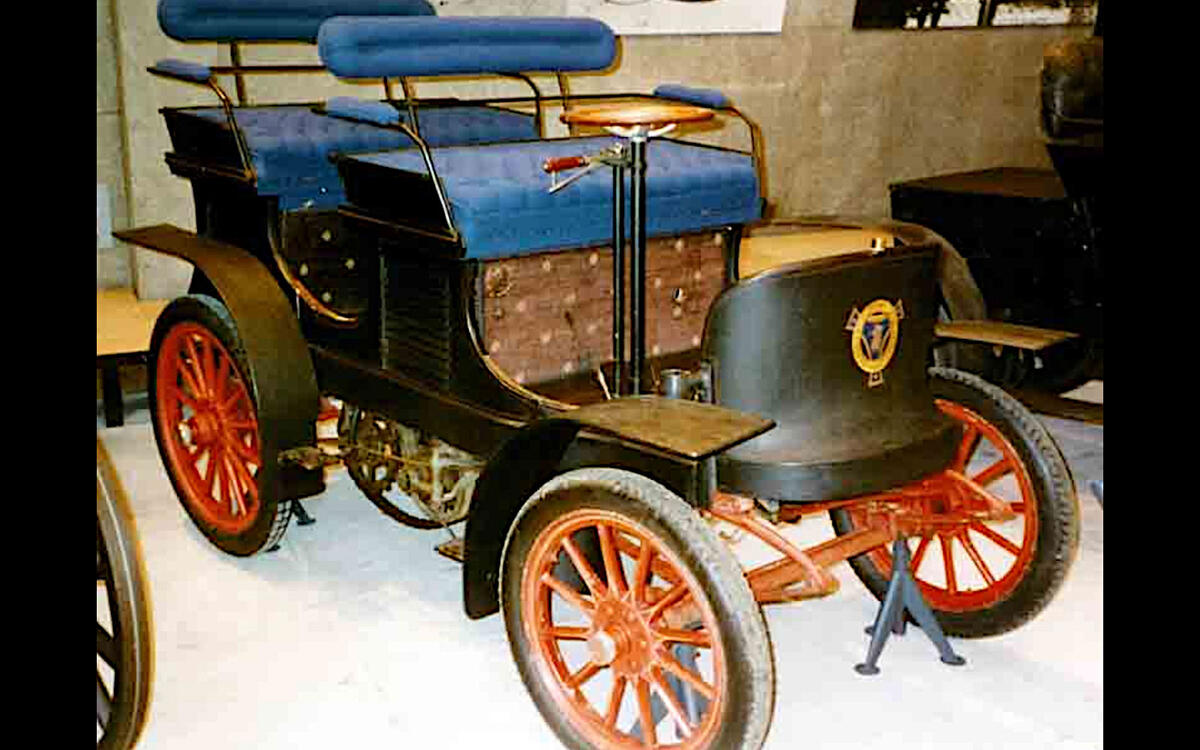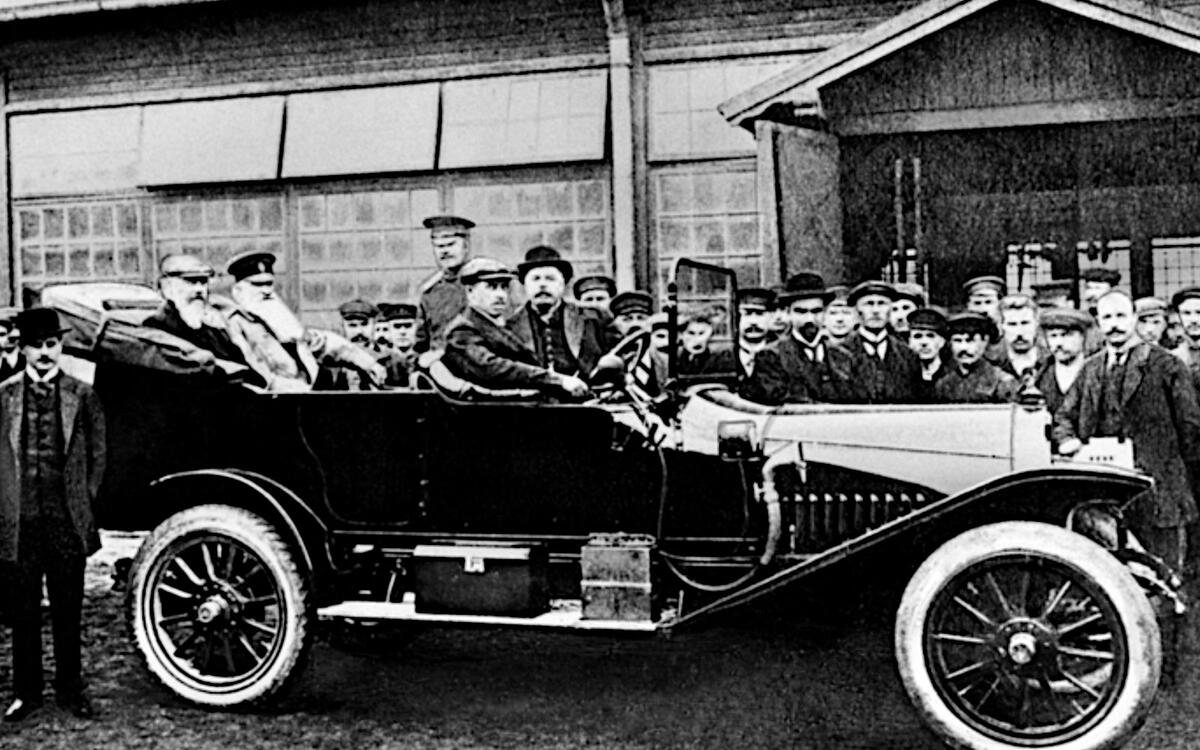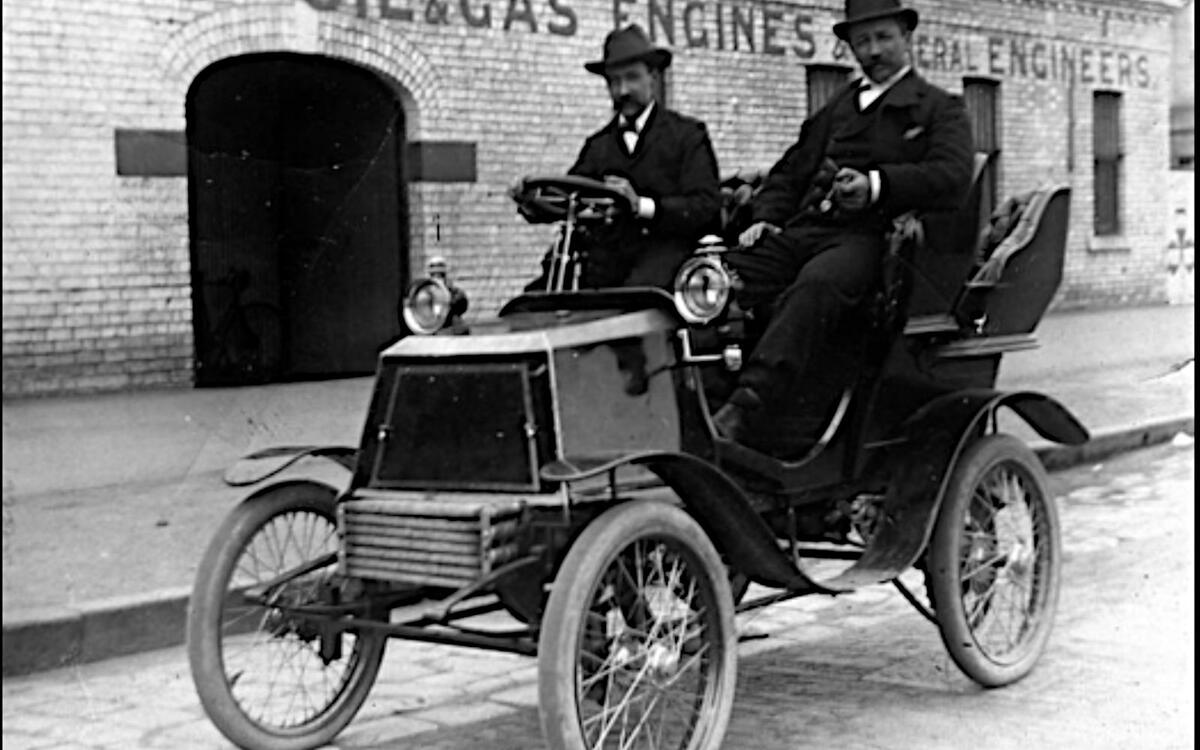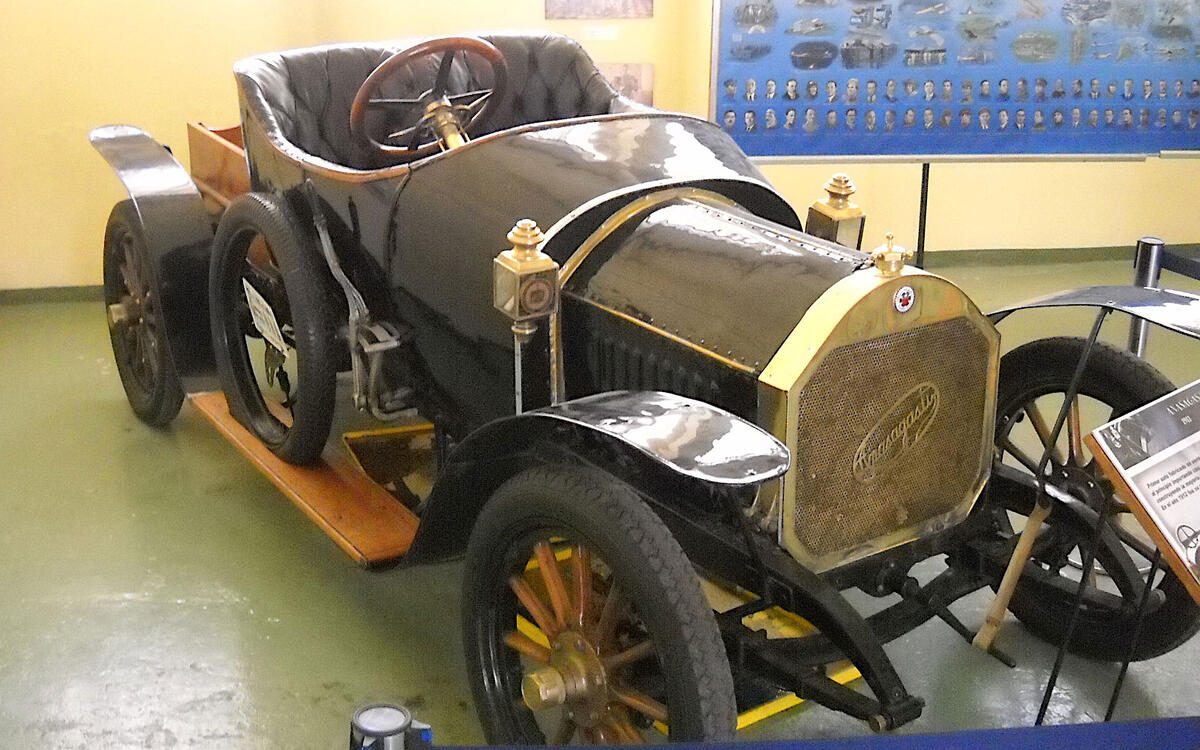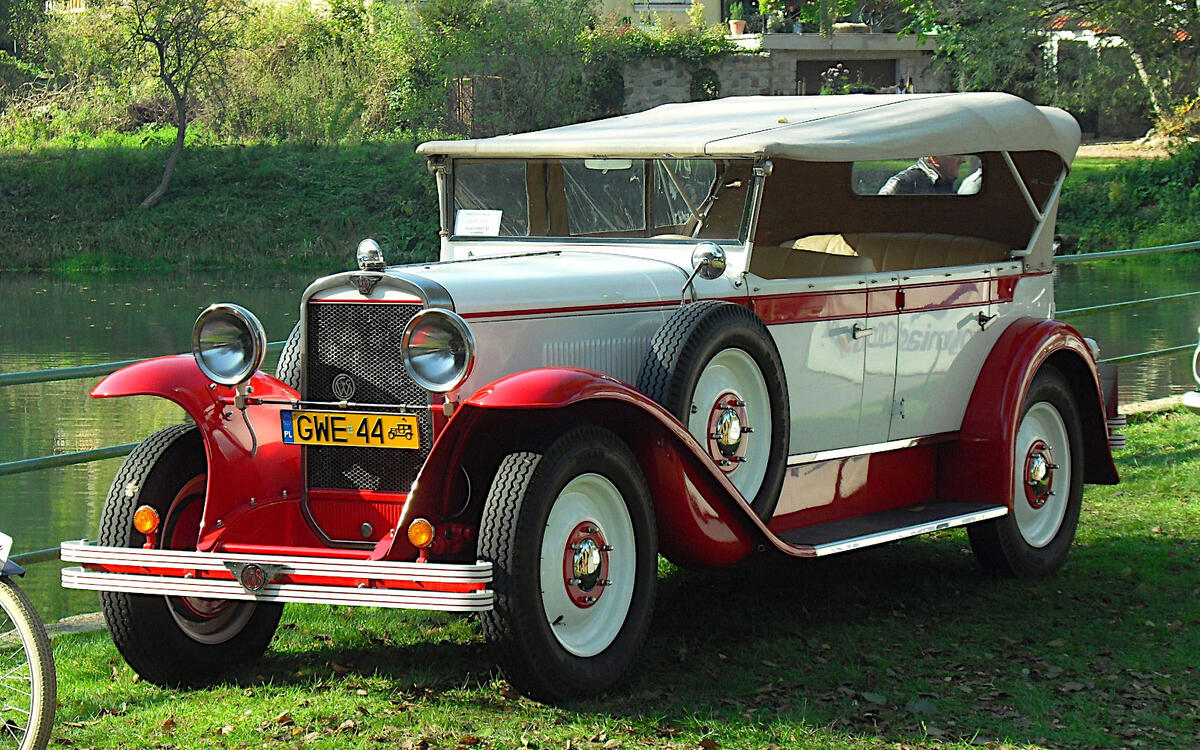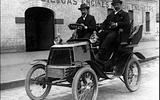 Slide of
Slide of
Many countries around the world have motor industries.
It therefore stands to reason that each of them at some point put its first car into volume production. Where it is possible to establish exactly what that car was, those are the ones we’re looking at here.
This is complicated both by sketchy historical records and by definitions. For the purposes of this article, we're ignoring commercial and military vehicles, prototypes, one-off specials, competition cars, locally built versions of cars developed elsewhere and anything powered by steam. Furthermore, volume production means a relatively large number of vehicles for the time with the intention of selling them to the public.
Changing those definitions will produce a different list, which you're welcome to try yourself. The cars are presented in chronological order:
 Slide of
Slide of
Germany: Benz Patent-Motorwagen (1886)
By common, though not universal, consent, the three-wheeled, rear-engined Patent-Motorwagen designed and built by Carl Benz (1844-1929) was the world's first car, and therefore Germany's too. It had slightly less than the power of a single horse, though with numerous advantages over the quadruped.
The third example was made famous by Benz's wife Bertha (1849-1944), who took her two sons on the world's first road trip in August 1888. This created enormous publicity, and led to an eventual production run of around 25 cars before it was replaced in 1894 by the four-wheeled Benz Velo, of which more than 1200 units were built in eight years.
 Slide of
Slide of
France: Peugeot Type 2 (1890)
It's well known that the Panhard et Levassor Type A and the Peugeot Type 3 both went on sale in 1891. Each was fitted with a Daimler V-twin engine built under licence by Panhard.
However, the historian Jean-Louis Loubet has written that Panhard agreed to market and sell Peugeot's earlier Type 2 - also Daimler-powered - which was built in a run of just four cars in 1890. This would mean that the Type 2 was in fact the first French production car made available to the public, even though Panhard sat on it for ten months before finally finding a buyer in June 1891.
 Slide of
Slide of
Belgium: Vincke (1894)
In recent times, Belgium's contribution to the motor industry has been to assemble cars designed by manufacturers based in other countries. In the early 20th century, however, there were nearly 200 Belgian car brands.,
The earliest was Vincke, which built a prototype in 1894 and went into production the following year. The company became particularly successful after the introduction of a new model called the Ideal in 1898, but later fell on hard times and was declared bankrupt in 1905.
 Slide of
Slide of
Italy: Miari & Giusti (1894)
The Padua-based Miari & Giusti company was founded in 1894 and almost immediately began production of a three-wheeled car designed by Enrico Bernardi (1841-1919).
Bernardi was even responsible for the engine, having already built several to power various devices, including his daughter's sewing machine and at least one converted tricycle. With Bernardi's help, Miari & Giusti therefore became Italy's first car manufacturer. The first Fiat did not appear until five years later.
 Slide of
Slide of
US: Duryea (1896)
Charles Duryea (1861-1938) and his brother Frank (1869-1967) built their first car in 1893, and another one the following year. They then formed the short-lived Duryea Motor Wagon Company, which had built and sold a further 13 cars of an improved design by the end of 1896.
The brothers subsequently went their separate ways, but they are credited with having introduced series car production to the United States.
 Slide of
Slide of
Czech Republic: Tatra Präsident (1897)
The Präsident was the first car produced by the Czech company (or Czechoslovakian in those days) now known as Tatra. It was essentially a carriage - a type of vehicle the company had been building for nearly half a century - but with a 2.7-litre two-cylinder Benz engine mounted in the rear rather than a horse attached to the front.
Reportedly, the car had a top speed of 19mph and fuel consumption of around 15mpg. The original model attracted considerable interest, and improved versions were sold under different names. A replica of the original Präsident built by Tatra to the original specification was revealed in 1977.
 Slide of
Slide of
UK: Humber Sociable (1898)
The Daimler Motor Company began selling cars in the UK in 1896. At first, these were simply imported from the German company of the same name, but examples produced in Coventry became available in 1897. However, these were built to German patents. Although Daimler enthusiasts might object to this, it could therefore be said that the cars were in fact British-built versions of German models.
If so, large-scale production of a truly British model began with the launch of the Humber Sociable in 1898. This three-wheeler, apparently influenced by the French Bollée voiturette, was powered by an engine designed by Charles McRobie Turrell (1875-1923).
 Slide of
Slide of
Sweden: Scania (1903)
Better known now for its commercial vehicles, Scania put a car into production in 1903. At first, many of the components were imported from France and Germany, but it began using its own engine in 1908, by which time it had sold around 70 units.
Vabis, whose main business was railcars and trucks, also built a passenger car in 1903, having started out with an unsuccessful prototype six years earlier. The company merged with Scania in 1910. PICTURE: 1901 Scania prototype
 Slide of
Slide of
Japan: Takuri (1907)
Five years after starting work on his first prototype, Komanosuke Uchiyama created what is generally regarded as Japan's first petrol-fuelled car in 1907. (Its first steam car and first bus both appeared in 1904.)
Production amounted to about 10 examples. Prince Arisugawa Takehito (1862-1913) is believed to have bought one of them. Another is currently on display in the Toyota Automobile Museum in Nagakute.
 Slide of
Slide of
Russia: Russo-Balt 24-30 (1909)
The first Russian production car might have been the Yakovlev & Freze (also known as the Iakowleff-Frese). At least one example was built in 1896, and a suggested retail price was quoted, but the project soon collapsed, partly due to the death of one of its founders.
Large-scale Russian car production began with the launch of the imposing Russo-Balt 24-30 in 1909. 347 examples are reported to have been built. Russo-Balt was based in Riga, which at the time was part of the Russian Empire, but is now the capital of Lativa - so the 24-30 can also be considered the first Latvian production car.
 Slide of
Slide of
Australia: Tarrant (1910)
Harley Tarrant (1860-1949) built around 16 cars in Melbourne between 1900 and 1907. His business failed because he could not compete on price with imported cars such as the Ford Model T, and he became a Ford dealer instead.
In 2002, the Royal Automobile Club of Victoria acquired a Tarrant car built in 1906. In further tribute to Australia's motoring pioneer, it has also named its function room after Tarrant himself.
 Slide of
Slide of
Argentina: Anasagasti (1912)
The Argentinian motor industry was created by the engineer, aeronautics pioneer and occasional racing driver Horacio Anasagasti (1879-1932), who put a car into limited production in 1912.
The project lasted for three years before failing due to a lack of parts supply during the First World War. Around 50 examples of the car were built, and many of them were used as taxis in Buenos Aires. Today, there are streets named after Anasagasti in the cities of Cordoba and Salta.
 Slide of
Slide of
Poland: CWS T-1 (1927)
The first Polish car to go into volume production was built by Centralne Warsztaty Samochodowe (CWS), which was also responsible for Sokol motorcycles. Approximately 800 examples of the CWS T-1 were manufactured between 1927 and 1932, all using the same chassis but with a variety of elegant bodies.
Thanks to a particularly ingenious piece of design by Tadeusz Tański (1892-1941), the entire car - including its 3.0-litre four-cylinder engine - could be taken apart and reassembled using just one spanner and one screwdriver.
 Slide of
Slide of
South Korea: Sibal (1955)
The Hyundai Pony of the mid 1970s is sometimes described as the first South Korean production car, but the Sibal preceded it by two decades.
Launched in 1955, the Sibal shared many components with the military Jeep which it resembled. Quoted estimates of how many were built vary, but they are all in the low thousands.
 Slide of
Slide of
China: Dongfeng CA71 (1958)
Although it was powered by a 1.9-litre Mercedes engine, the Dongfeng CA71 is credited with being China's first indigenous passenger car. The Hongqi CA72 is sometimes said to hold this title, but it was still at the prototype stage during the very brief production life of the Dongfeng.
Both vehicles were designed and built by First Automotive Works (FAW), which today produces many vehicles under several brand names.
 Slide of
Slide of
Egypt: Ramses (1958)
The Ramses was a redesigned version of the NSU Prinz, the first car the German company launched after the end of the Second World War.
As its country's first car, the Ramses was naturally a source of pride among Egyptians. However, it fell from grace after the Nasr company was founded in 1960 to produce locally-assembled Fiats, which were much better.
 Slide of
Slide of
Ukraine: ZAZ-965 (1960)
The ZAZ-965 was the first in a long-running series of small cars known as Zaporozhets. Although it looked very much like the Fiat 600, it was in fact a quite different car. Major differences included an air-cooled V4 engine (Fiat used a water-cooled inline four), independent front suspension and a three-box body design.
An improved and more powerful version called the ZAZ-965A was launched in late 1962. Production of this car overlapped with that of the second-generation Zaporozhets, which was built in various forms from 1966 to 1994.
 Slide of
Slide of
Brazil: Brasinca Uirapuru (1964)
Created by a company whose main business was building trucks, the Uirapuru appears to be the first indigenous Brazilian car designed for road use. It was a sports car powered by a 4.3-litre straight-six Chevrolet engine, and was discontinued after fewer than 80 examples had been built due to a lack of commercial success.
The Uirapuru is perhaps best known because of its apparent similarity to the slightly later Jensen Interceptor. The most obvious connection is that both cars have a wrap-around rear window, but this was also true of the 1962 Studebaker Avanti.
 Slide of
Slide of
New Zealand: Trekka (1966)
According to confirmed reports, Frederick Dennison (1876-1960) became the first New Zealander to build a petrol-fuelled car in 1900, while Cecil Wood (1874-1965) was the first to build more than one, starting the following year.
Nearly all volume production in New Zealand since then has been of foreign cars. However, around 2500 examples of the locally designed Trekka were manufactured between 1966 and 1973. The Trekka looked very much like a small Land Rover, but most of its mechanicals came from the first-generation Skoda Octavia, which had been launched in 1959.
 Slide of
Slide of
Turkey: Anadol A1 (1966)
The first car mass-produced in Turkey was built by Otosan but had a lot of British influence. It was developed partly by Reliant and powered by a Ford Kent engine, and had a fibreglass body designed by Tom Karen (born 1926).
Over 15,000 examples of the A1 are believed to have been produced from 1966 to 1975. Anadol continued manufacturing other models until 1991. The A1 was preceded by the Devrim, which appeared in 1961. This could have been Turkey's first production car, but the project collapsed after only four units had been built.
 Slide of
Slide of
Iran: Saipa 701 Caravan (2000)
Iran's motor industry has been dominated for many years by Saipa and Iran Khodro, both of which have built many foreign models under licence. Saipa was the first to produce a vehicle of its own design. The 701 Caravan was a minivan, or MPV, clearly inspired by the first-generation Ford Galaxy, SEAT Alhambra and Volkswagen Sharan but powered by a 2.4-litre Nissan engine.
It was launched in 2000, and followed a year later by Iran Khodro's Samand, a saloon car based on the Peugeot 405 platform.
 Slide of
Slide of
Pakistan: Adam Revo (2005)
Although vehicles had been assembled in Pakistan for over half a century, it wasn't until April 2005 that an indigenous car hit the market. The Adam Revo city car was the cheapest in the country, and the only one designed locally.
Despite this, it was discontinued just 17 months after its debut due to a lack of both working capital and, the company claimed, government support.
 Slide of
Slide of
Taiwan: Luxgen M7 (2009)
Yulon Motor has been assembling cars designed by foreign makers since the 1950s. In 2009, it launched its - and Taiwan's - first local model under a new brand name.
The Luxgen M7 is a large MPV available with either seven or eight seats. It has remained in production while other Luxgen models have come and gone, but it is due to be discontinued in November 2021.
 Slide of
Slide of
Kenya: Mobius 2 (2015)
Nairobi-based Mobius Motors was created to build rugged SUVs suitable for African markets. The prototype, Mobius I, was followed by the first production model, Mobius 2, which the company itself says was launched in 2015, though other sources give different years.
This model was followed by a larger and more powerful second-generation version which remains on sale today. It has recently been joined by Mobius 3.
 Slide of
Slide of
Croatia: Rimac Concept One (2016)
Croatia has a long history of building vehicles and components, but it has produced very few cars of its own. The earliest appears to be the Rimac Concept One. Despite its name, this was a production model, though only just. It was an all-electric sports car with an output of nearly 1300bhp.
Vehicle manufacturer DOK-ING formed an automotive division in 2010 and built an electric city car concept called XD, but this never made it to production.
We take a close look at the models that kicked off the global automotive industry
Advertisement









